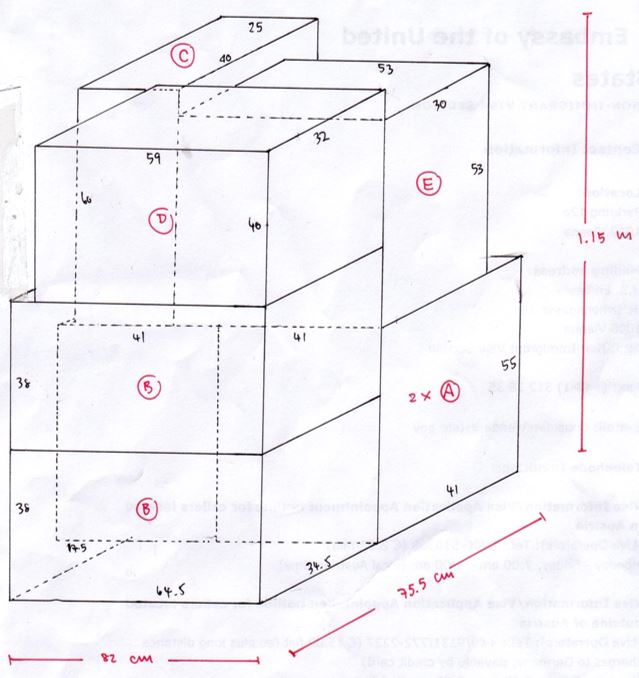Mind Maps and Sophomore Organic Chemistry
Mind Map Epiphany
Once I had to read and understand a chemical patent. Patents tend to be cryptic and uninteresting, and that one was particularly boring. My thinking started wandering every time I tried to read it, and tears of boredom welled up in my eyes. Desperate for a solution (and being paid hourly!) I decided to have some fun. It is strange how some of us feel guilty about having fun and doing a pressing task at the same time even though we work more enthusiastically when we do. Many of us are intellectual masochists, people who believe productivity has to hurt to be effective, whereas, in fact:
productivity doesn’t have to hurt
This is what I did. I went straight to the claims because these are the most important part of a patent. One at a time I focused on reading and understanding each one, then feeding the information into mind mapping software. Bright colors appeal to me, so I made the map look good (at least to me); it kept my ideas organized and aesthetically appealing.
Amazing. Within 5 min I was waking up, and in ten in a state of flow (affiliate link to the source on flow: https://amzn.to/3wqjS6b) letting nothing distract me. Magically, a dull task suddenly seemed intriguing. As the mind map evolved, I would reorder and reprioritize according to the legal strategy unfolding in front of me. After a relatively short time, a big picture understanding developed whereas before from the same material that was convoluted, confusing, endless, and impossible to focus upon before. Months later, when I needed to remind myself what the patent was all about, that mind map saved many hours. That was my epiphany moment:
mind mapping enables powerful visual learning
One of the most insightful people I ever met did not specifically use mind maps but had a creative gift to doddle humorous and helpful images of facts and strategies that were hard to visualize. She brought them to life. Fig 1 is a sketch made when she was figuring out how to optimally pack boxes in a shipping container. This graphic was sketched on scrap paper (stare hard and you might see words on the other side), never intended to be a work of art, but it’s not as bad as one, do you agree? More drawings from her are shown at the end of this article.

Then I related this to one of my YouTube heroes: Samuel Suresh. This guy is incredible! For one of his recent videos, see the link here. Check them all out: I have not seen a bad one from him so far.
In nearly all his videos, Samuel tells the story of a student struggling to learn and conquering the challenge. He is someone who acquired an iPad and an Apple Pencil and has milked it for all the note-taking ability possible. It seems he must never go anywhere without this device. Samuel is a master of images that teach by telling stories, and he cannot draw much, he says! This is a special person. He’s not a teacher, dammit, but he is teaching better than many of us who have been paid to do so for years.
Samuel and I both are attracted to clear colorful graphics. He makes beautiful creative ones. If, like me, you need help, then you might turn to a flowcharting program. Mapping software can involve pricy monthly subscriptions, but the one I use isn’t: SimpleMinds. It was Samuel and SimpleMind that led me to try flow charts routinely in teaching.
Relevance To Studying Sophomore Organic Chemistry
I was asking a friend, how to improve my workbooks Sophomore Organic Chemistry By Inquisition 1 and 2 (shameless advertising: available here for $35 each). She lectures probably more than a thousand sophomore organic chemistry students every year, so is a good person to ask. This was her reply, ”It is sometimes difficult to see where you are going with each chapter.” So I asked her if a mind map would help, and she enthusiastically confirmed it would.
Thanks to her insight, I tried including mind map overviews at the end of every lecture; the students gobbled them up and insisted on my emailing them out at the end of each class. Recall, I have a blog on this site, and soon a YouTube video on What Makes Learning Sophomore Organic Hard?
That material argues for the outsized relative importance of the first five or six lectures of sophomore organic chemistry, relative to all the others in the whole course (first and second semesters). So, I mind-mapped some of those chapters to include in the second edition of my workbook (Figs 2 – 5).




Soon, those pivotal chapters of Sophomore Organic By Inquisition 1, including these flow charts and more, and some other changes, will be published on Apple Books, and Amazon Kindle, for about $9.99 a download. Enjoy!
Finally, a story. I bought a new washing machine, a beautiful water-and-energy-efficient front loader which I worship every Sunday. I told my friend, The Princess who draw the packing plan in Fig 1, and she visualized my new love affair in Fig 6; it’s spot-on.

A few affiliate links to a couple of books on mind mapping are below.
Best known is the one by Toni Krasnic who used to be a chemistry professor.
Concise Learning: Learn More & Score Higher in Less Time with Less Effort
By Toni Krasnic
This other one is by a person who has looked into mind mapping in even more depth, and his enthusiasm shines through. Most people could learn more than a little about applying this method from him. I love it too and will apply mind maps more in the future.